Baby, it’s cold outside
It can be tough to find the motivation to do an outdoor workout in the thick of winter with subzero temperatures, wind chill, snow, rain, and ice. However, don’t let the cold weather deter you from accomplishing your fitness goals—even in the winter. These are nasty infections you can avoid by skipping the indoor gym.
Read on down below and follow our expert tips to stay fit, warm, and motivated this winter.
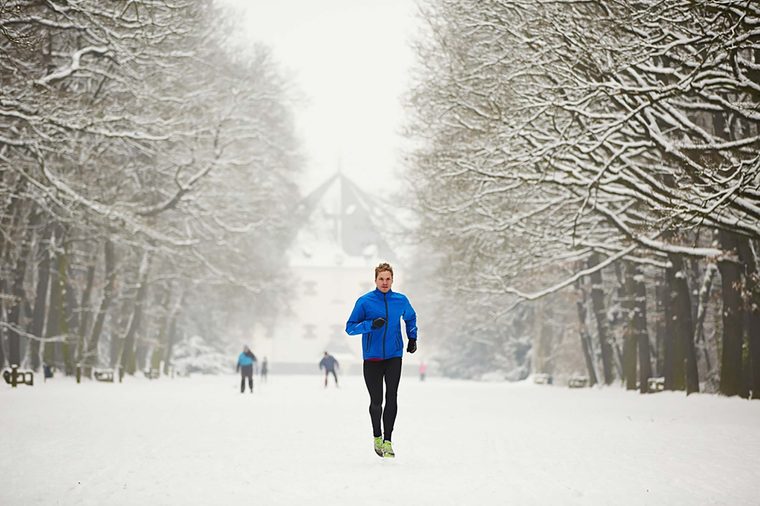
Dress for the weather
Workout clothes are much more than just for aesthetics—they’re designed for the type of exercise you’re doing as well as the climate and weather that you’re training in. “The most important elements to take into consideration for outdoor workouts are wind chill and precipitation,” says Kaitlyn Noble, a personal trainer with Thumbtack in Beverly Hills. Layers will protect you on a cold, wind-free day, however, wind chills can easily penetrate thinner items of clothes, which is why wind-resistant materials are so crucial. “Keep in mind that it’s not recommended to exercise outdoors when wind chill goes below -20 degrees Fahrenheit.” And of course, if your clothes are wet, you’ll have no protection from the frigid temperature, so be sure to wear a water-resistant outer layer when it’s raining or snowing. Your workout wear should always be water wicking in the cold too, like with thermal leggings, since sweat-soaked clothes can easily freeze.
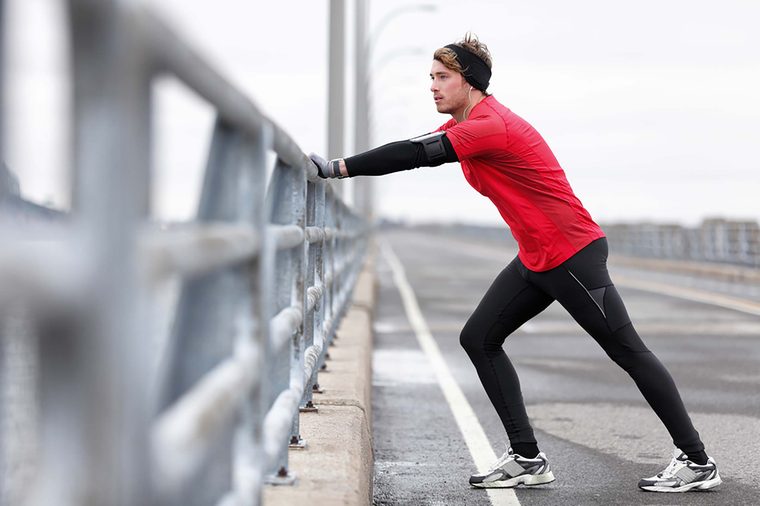
Active warm-ups
“Imagine a rubber band… it’s flexible, bendy, and pulls right back to its shape. Now imagine that same rubber band, but frozen. If you try to pull too hard before it’s thawed out, it’ll snap,” explains Ashley Wilking, a trainer at Rumble Boxing in New York City. Your muscles are like rubber bands, you need to gradually warm them up to prevent injury.
Noble suggests starting to heat up your larger muscles, like quads and hamstrings, with light stretching, jumping jacks, and lunges indoors before heading outside. If you’re commuting to a class or gym, consider speed walking to get your heart rate up.
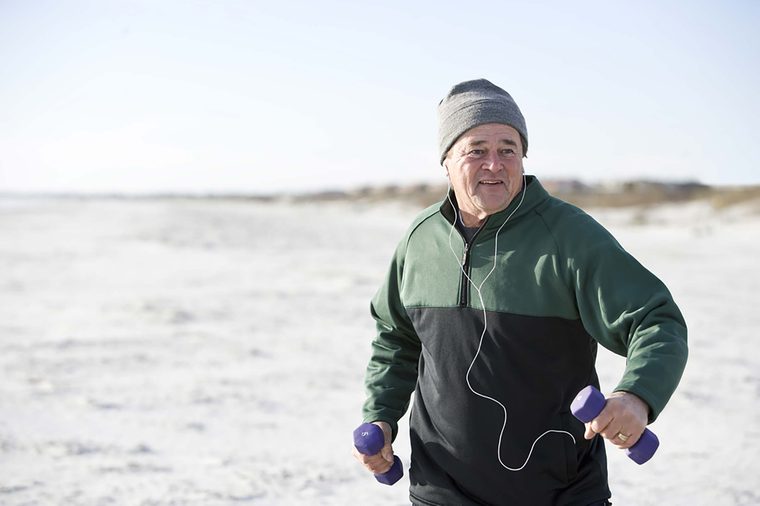
Don’t skip your cool down
Make sure to give your body time to cool down and stretch before you rush out of your workout class or the gym. “You don’t want to go from a heart-pumping, sweat-drenched working session, straight into the freezing cold or a sedentary position, like sitting at a desk,” says Wilking. Stretching post-workout is crucial—but particularly after a cold-weather workout to keep your body safe from injury.
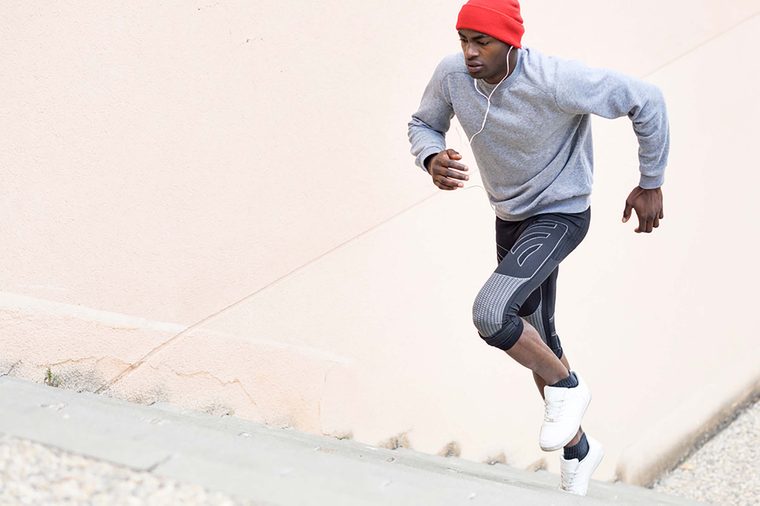
Protect your head and hands
While only about 10 percent of your body heat escapes from your head, as opposed to 70 percent as previously believed (just one of the many myths about the human body), wearing a hat in cold weather—especially when doing outdoor activities, like biking, running, and even on your daily stroll—is still important. “Choose a hat made of a warm, breathable material that also protects your ears,” says Noble. Your hands are another body part that’s particularly vulnerable to frostbite, which means gloves are a must. Pro tip: Choose a pair with touchscreen fingers, so you’re not taking them off and on to change music.
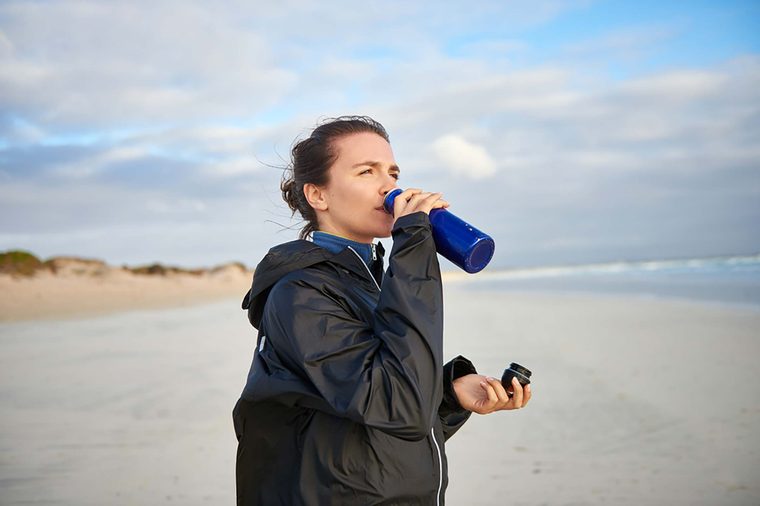
Hydrate
You may feel like you sweat less in cold weather, but don’t be fooled, you still need to drink up. Dehydration increases your risk of injury significantly and will slow down your performance. Stay hydrated by drinking room temperature water before, during, and after your workout. “Many people find that cold water is harder to drink, so by keeping your water room temperature you can hydrate more easily,” says Amanda Kloots, creator of The Rope and The Dance in New York City and Los Angeles.
Here’s How Much Water You Really Need in a Day, with Nutritional Scientists’ Latest Wisdom
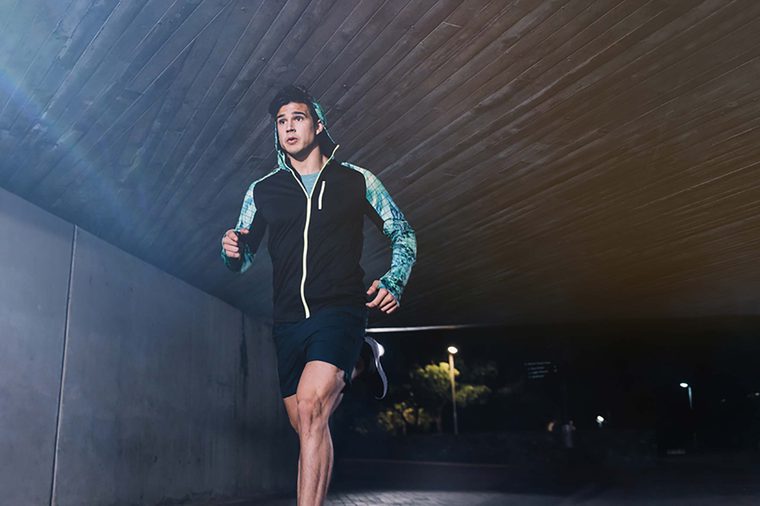
Choose reflective gear
Since winter months also mean less daylight, your workout is more likely to happen in the dark. Make yourself visible to cars, cyclists, and other pedestrians by wearing reflective items, like shoes, backpacks, and jackets.
Love To Walk or Run Outside? 6 Tools To Help You Stay Safe After Dusk
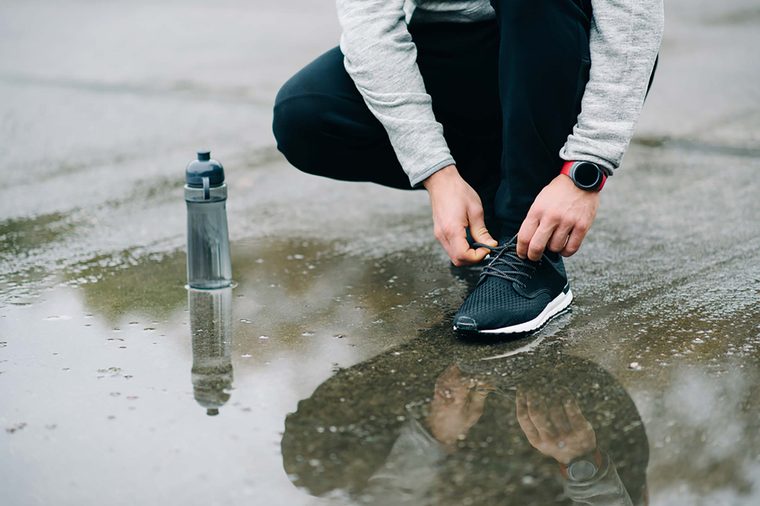
Get shoes with traction
When you’re running outdoors—where it’s icy or wet—it’s imperative to wear running shoes that provide proper traction. “If you’re an avid runner and have been wearing the same sneakers for a few months, it’s probably time to replace them since it’s likely they’ve lost some grip,” advises Noble.
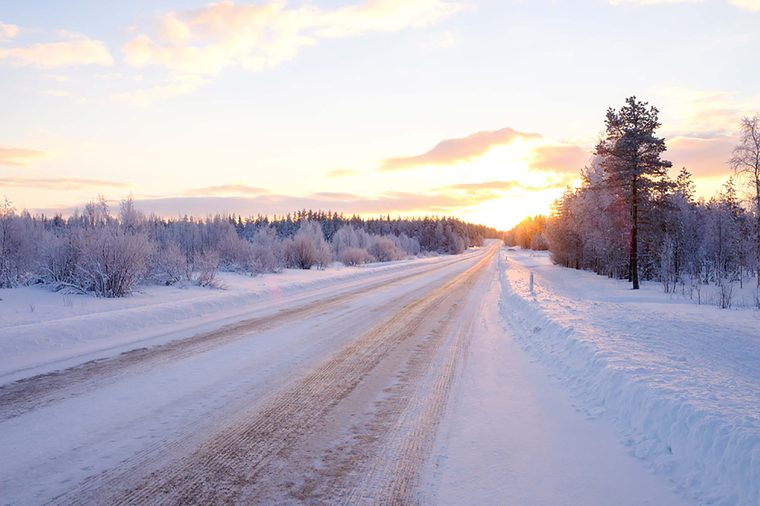
Don’t forget sun protection
Just because it’s cold doesn’t mean you can’t get burnt. Don’t skimp on the sunscreen. Continue wearing sun protection during daylight hours, regardless of the temperature.
